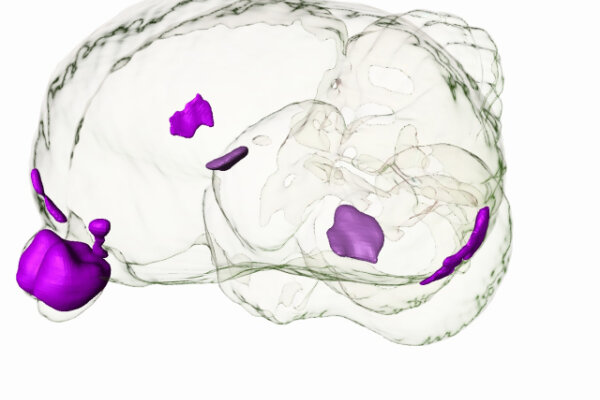2011-10-27

There is something mysterious about olfaction. It is the only sense that directly enters the forebrain without a thalamic relay. It also has tight links with the limbic system; creating the myth that olfaction is a strong gateway into emotional memory. Pigeons also use olfactory cues to navigate over unfamiliar areas, and any impairment of the olfactory system generates remarkable reduction of homing performance. This special function of olfaction is also lateralized: Studies suggest a critical involvement of the right olfactory bulb (OB) and the left piriform cortex (CPi) for initial orientation. Unfortunately, the structural organization of the olfactory system is by far not clarified yet. Thus, a team of Biopsychologists from Bochum and Witwatersrand (South Africa) re-analyzed the system by antero- and retrograde tract tracing with biotinylated dextran amine and choleratoxin subunit B, and especially evaluated quantitative differences in the number of cells in the OB innervating the left and right CPi. They verified a strong bilateral input to the CPi, and the prepiriform cortex (CPP), as well as small projections to the ipsilateral medial septum and the dorsolateral corticoid area and the nucleus taeniae of the amygdala in both hemispheres. The adjacent picture depicts some of the olfactory components within a 3D-view of the pigeon brain. However, the authors could not reveal any asymmetries within in the projections described. Thus, the functional lateralization of the olfactory system is not simply based on differences in the number of projecting axons of the major processing streams.

There is something mysterious about olfaction. It is the only sense that directly enters the forebrain without a thalamic relay. It also has tight links with the limbic system; creating the myth that olfaction is a strong gateway into emotional memory. Pigeons also use olfactory cues to navigate over unfamiliar areas, and any impairment of the olfactory system generates remarkable reduction of homing performance. This special function of olfaction is also lateralized: Studies suggest a critical involvement of the right olfactory bulb (OB) and the left piriform cortex (CPi) for initial orientation. Unfortunately, the structural organization of the olfactory system is by far not clarified yet. Thus, a team of Biopsychologists from Bochum and Witwatersrand (South Africa) re-analyzed the system by antero- and retrograde tract tracing with biotinylated dextran amine and choleratoxin subunit B, and especially evaluated quantitative differences in the number of cells in the OB innervating the left and right CPi. They verified a strong bilateral input to the CPi, and the prepiriform cortex (CPP), as well as small projections to the ipsilateral medial septum and the dorsolateral corticoid area and the nucleus taeniae of the amygdala in both hemispheres. The adjacent picture depicts some of the olfactory components within a 3D-view of the pigeon brain. However, the authors could not reveal any asymmetries within in the projections described. Thus, the functional lateralization of the olfactory system is not simply based on differences in the number of projecting axons of the major processing streams.